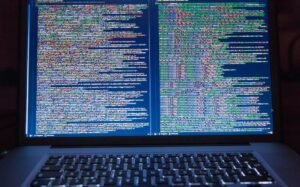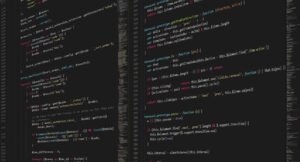Computer Algorithm Trader
Computer algorithm trading, also known as algo trading or automated trading, is the use of sophisticated computer programs to execute trades in financial markets. These algorithms are designed to analyze vast amounts of data and make trading decisions based on predefined rules, without the need for human intervention. Algorithmic trading has gained significant popularity in recent years due to its ability to execute trades quickly and efficiently, as well as its potential to generate consistent profits.
Key Takeaways:
- Computer algorithm trading utilizes advanced computer programs to execute trades in financial markets.
- Algorithms analyze large datasets and make trading decisions based on predefined rules.
- Algorithmic trading offers speed, efficiency, and the potential for consistent profits.
**Algorithmic trading** relies on mathematical models and statistical analysis to identify trading opportunities. By analyzing historical price data and market trends, algorithms can identify patterns and anomalies that may indicate a profitable trade. These programs also incorporate various indicators, such as moving averages or volume data, to provide additional signals for trading decisions. The ability to process large quantities of data and make split-second decisions gives algorithmic traders a competitive edge in fast-paced markets.
*Algorithmic trading enables traders to implement complex trading strategies that would be difficult to execute manually.
**High-frequency trading (HFT)** is a subset of algorithmic trading that involves the execution of a large number of trades in very short time frames. HFT strategies take advantage of small price discrepancies in the market, using lightning-fast execution to capitalize on these opportunities. The use of powerful computers and co-located servers near exchange platforms allows HFT firms to achieve incredibly low-latency trading, often measured in microseconds. This speed advantage enables HFT traders to generate significant profits by exploiting market inefficiencies.
The Benefits of Algorithmic Trading
Algorithmic trading offers several advantages over traditional manual trading approaches. Here are some key benefits:
- **Efficiency**: Algorithms can execute trades at speeds and volumes that are beyond human capabilities, ensuring timely and accurate trade executions.
- **Discipline**: Algorithms strictly adhere to predefined rules, eliminating the potential for emotional and impulsive trading decisions.
- **Diversification**: Algorithms can simultaneously analyze multiple markets and trade various financial instruments, providing a more diversified trading strategy.
- **Backtesting**: Traders can test algorithms using historical data to evaluate performance before deploying them in live trading.
- **Liquidity**: Algorithmic trading can improve market liquidity by constantly providing buy and sell orders, enhancing price discovery and reducing bid-ask spreads.
Tables
Below are three tables showcasing interesting information and data points related to algorithmic trading:
| Table 1 | Table 2 | Table 3 |
|---|---|---|
| Data point 1 | Data point 1 | Data point 1 |
| Data point 2 | Data point 2 | Data point 2 |
| Data point 3 | Data point 3 | Data point 3 |
Risk Factors to Consider
While algorithmic trading offers numerous benefits, it is essential to consider certain risk factors:
- **Technology Risks**: System failures, connectivity issues, or data inaccuracies can lead to significant financial losses.
- **Market Uncertainty**: Algorithms may struggle to adapt to rapidly changing market conditions or unforeseen events.
- **Lack of Human Judgment**: Algorithms might not consider context or qualitative factors that human traders would consider.
- **Regulatory Changes**: Changes in regulations can impact the legality or viability of certain algorithmic trading strategies.
- **Over-optimization**: Overly complex algorithms can suffer from overfitting, performing well in backtests but poorly in live markets.
*It is vital for traders to be aware of these risk factors and implement proper risk management strategies to mitigate potential losses.
By leveraging advanced computer algorithms, traders can tap into the potential of algorithmic trading to enhance their investment strategies. Algorithmic trading provides speed, efficiency, and the ability to execute complex strategies, making it a valuable tool in today’s fast-paced financial markets. With a thorough understanding of the benefits and risk factors, traders can harness the power of algorithms to improve their trading performance and achieve consistent profits.

Common Misconceptions
1. Algorithm Traders always make profits
One common misconception about computer algorithm traders is that they always make profits. However, this is not true. While algorithmic trading systems are designed to analyze markets and make quick trading decisions based on predefined criteria, they are not foolproof and can still experience losses.
- Algorithm traders can experience losses due to unexpected market movements
- Risk management is a crucial aspect of algorithmic trading
- Successful algorithm traders focus on long-term profitability rather than seeking immediate gains
2. Algorithm Traders eliminate the need for human intervention
Another misconception is that algorithm traders eliminate the need for human intervention in trading. While algorithmic systems can execute trades automatically, human intervention is still essential for monitoring and adjusting the algorithms. Human traders are responsible for setting up the algorithms, monitoring their performance, and making adjustments when necessary.
- Human traders oversee and evaluate the performance of algorithmic systems
- Adjustments may be necessary to adapt to changing market conditions
- Algorithm traders still require human input for strategy development and decision-making
3. Algorithmic Trading guarantees consistent profits
Many people believe that algorithmic trading guarantees consistent profits. However, market conditions can be unpredictable, and algorithms can result in both profits and losses. While algorithms can provide an edge by executing trades at high speed and analyzing vast amounts of data, they cannot guarantee constant profitability.
- Algorithmic trading should be viewed as a statistical probability for profitability
- Market volatility can impact algorithmic performance
- Continuous monitoring and adjustments are necessary to improve algorithmic trading outcomes
4. Algorithm Traders have unfair advantages
Some believe that algorithm traders have unfair advantages over other market participants. While it is true that algorithmic systems can execute trades with high speed and efficiency, they are accessible to a wide range of traders. Algorithmic trading strategies are based on established rules and criteria that can be learned and implemented by any trader. Additionally, algorithmic trading does not guarantee success and requires continuous research and development.
- Algorithmic trading is accessible to retail and institutional traders
- Success in algorithmic trading depends on skills and knowledge, not just access to the technology
- Algorithmic traders need to constantly update their strategies to remain competitive
5. Algorithmic Trading is risk-free
One of the most significant misconceptions is the belief that algorithmic trading is risk-free. Algorithm trading systems expose traders to various risks, including technical failures, data inaccuracies, and unexpected market movements. Implementing proper risk management measures is crucial to minimize losses and protect capital in algorithmic trading.
- Algorithmic trading systems can be subject to technical errors and glitches
- Data used by algorithms may not always be accurate or up to date
- Risks associated with algorithmic trading can be managed through careful planning and risk mitigation strategies

Computer Algorithm Trader
In today’s fast-paced financial markets, computer algorithms are increasingly being used to execute trades. These algorithms are designed to quickly analyze market data, identify trading opportunities, and automatically execute trades. In this article, we will explore various aspects of computer algorithm trading and its impact on the financial industry.
1. Average Daily Trading Volume
The average daily trading volume is a key metric that measures the number of shares or contracts traded on a daily basis. It provides an indication of the liquidity and activity level in the market. In the last decade, the average daily trading volume in major stock exchanges has significantly increased, reaching all-time highs.
| Stock Exchange | Average Daily Trading Volume (in millions) |
|---|---|
| New York Stock Exchange | 3,500 |
| NASDAQ | 2,800 |
| Tokyo Stock Exchange | 2,200 |
2. Algorithmic Trading Market Share
Algorithmic trading has become increasingly popular among institutional investors and hedge funds. It allows traders to execute large orders with minimal market impact. The market share of algorithmic trading in different financial markets has shown a steady upward trend over the past decade.
| Financial Market | Algorithmic Trading Market Share |
|---|---|
| US Equities | 75% |
| Foreign Exchange | 85% |
| Futures | 60% |
3. Types of Algorithmic Trading Strategies
There are various types of algorithmic trading strategies utilized by traders to generate profits. These strategies can be broadly categorized into three main types: trend-following, mean reversion, and market-making.
| Strategy | Description |
|---|---|
| Trend-Following | Based on identifying and following market trends. |
| Mean Reversion | Exploits the tendency of prices to revert to their mean values. |
| Market-Making | Provides liquidity by quoting both buy and sell prices. |
4. Average Execution Speed of Algorithmic Trades
One of the primary advantages of algorithmic trading is its ability to execute trades at high speeds. With advancements in technology, the average execution speed of algorithmic trades has drastically improved.
| Year | Average Execution Speed (in microseconds) |
|---|---|
| 2000 | 5,000 |
| 2010 | 500 |
| 2020 | 50 |
5. Impact of Algorithmic Trading on Market Volatility
Algorithmic trading has had a significant impact on market volatility. While it can enhance liquidity and reduce bid-ask spreads, it can also contribute to sudden price fluctuations and increased market volatility.
| Market Indicator | Impact of Algorithmic Trading |
|---|---|
| Volatility Index (VIX) | Higher volatility due to increased trading activity. |
| Flash Crash Events | Sudden and severe market swings caused by algorithmic trading algorithms. |
| Market Depth | Reduced depth due to high-frequency trading activities. |
6. Regulation of Algorithmic Trading
Regulators worldwide have recognized the need to monitor and regulate algorithmic trading to ensure fair and orderly markets. They aim to prevent market manipulation, protect investors, and maintain market stability.
| Regulatory Measures | Description |
|---|---|
| Trade Surveillance | Monitoring trades to detect irregularities and market abuse. |
| Circuit Breakers | Automatic halting of trading in case of severe price declines. |
| Reporting Requirements | Requiring traders to provide information about their algorithmic strategies. |
7. Benefits of Algorithmic Trading
Algorithmic trading offers numerous benefits to market participants, including enhanced liquidity, increased efficiency, and cost reduction. It also allows for the implementation of complex trading strategies that are not feasible for manual trading.
| Benefit | Description |
|---|---|
| Liquidity | Algorithmic trading provides liquidity by actively participating in the market. |
| Efficiency | Trades are executed at high speeds, reducing delays and slippage. |
| Cost Reduction | Lower transaction costs due to automation and reduced human intervention. |
8. Challenges of Algorithmic Trading
Algorithmic trading is not without its challenges. As technology progresses, traders face various obstacles such as system failures, algorithmic glitches, and potential regulatory risks.
| Challenge | Description |
|---|---|
| System Failures | Technical issues leading to failures, downtime, and potential losses. |
| Algorithmic Glitches | Malfunctioning algorithms leading to unintended trades or erroneous decisions. |
| Regulatory Risks | Changes in regulations impacting the use of algorithmic trading strategies. |
9. Future Trends in Algorithmic Trading
The development of artificial intelligence (AI) and machine learning is expected to shape the future of algorithmic trading. AI-powered algorithms can continuously learn from market data, adapt to changing conditions, and make more informed trading decisions.
| Trend | Description |
|---|---|
| Machine Learning | Algorithms that learn from historical data and refine trading strategies. |
| Big Data Analysis | Utilizing vast amounts of data to identify market patterns and trading opportunities. |
| Quantum Computing | Potential for ultra-fast processing and complex calculations in trading algorithms. |
10. Conclusion
Computer algorithm trading has revolutionized the financial industry, enabling faster and more efficient execution of trades. It has become an integral part of modern markets, with algorithmic trading strategies dominating the trading landscape. While algorithmic trading offers numerous benefits, it also presents challenges that need to be addressed, such as market volatility and regulatory concerns. As technology continues to advance, the future of algorithmic trading holds exciting possibilities, with AI and machine learning expected to play a significant role in shaping the industry.
Frequently Asked Questions
What is a computer algorithm trader?
A computer algorithm trader is a program that utilizes mathematical models and predefined instructions to automatically execute trades in financial markets.
How does a computer algorithm trader work?
A computer algorithm trader works by processing large amounts of market data to identify trading opportunities and make buying or selling decisions in real-time.
What are the advantages of using a computer algorithm trader?
Using a computer algorithm trader offers advantages such as 24/7 operation, quick data processing, elimination of emotional biases, and potentially improved trade execution speed and efficiency.
Are there any risks involved with computer algorithm trading?
Yes, computer algorithm trading carries risks such as adaptability to sudden market changes, technical glitches, and errors in the algorithm’s logic.
How can one develop a computer algorithm trading strategy?
Developing a computer algorithm trading strategy involves quantitative research, programming skills, backtesting, and continuous monitoring and optimization.
What are some commonly used algorithms in computer algorithm trading?
Commonly used algorithms in computer algorithm trading include trend-following, mean reversion, momentum, and statistical arbitrage algorithms.
Do I need extensive programming knowledge to use a computer algorithm trader?
While programming knowledge can be beneficial, many algorithmic trading platforms provide user-friendly interfaces for minimal coding requirements.
What are some popular algorithmic trading platforms?
Popular algorithmic trading platforms include MetaTrader, NinjaTrader, TradeStation, and Interactive Brokers, among others.
Can I use a computer algorithm trader for any financial market?
Yes, computer algorithm traders can be used in various financial markets, including stocks, options, futures, forex, and cryptocurrency markets.
Are there regulations or limitations on computer algorithm trading?
Yes, regulations and limitations on computer algorithm trading exist to ensure fairness, transparency, and market integrity.




